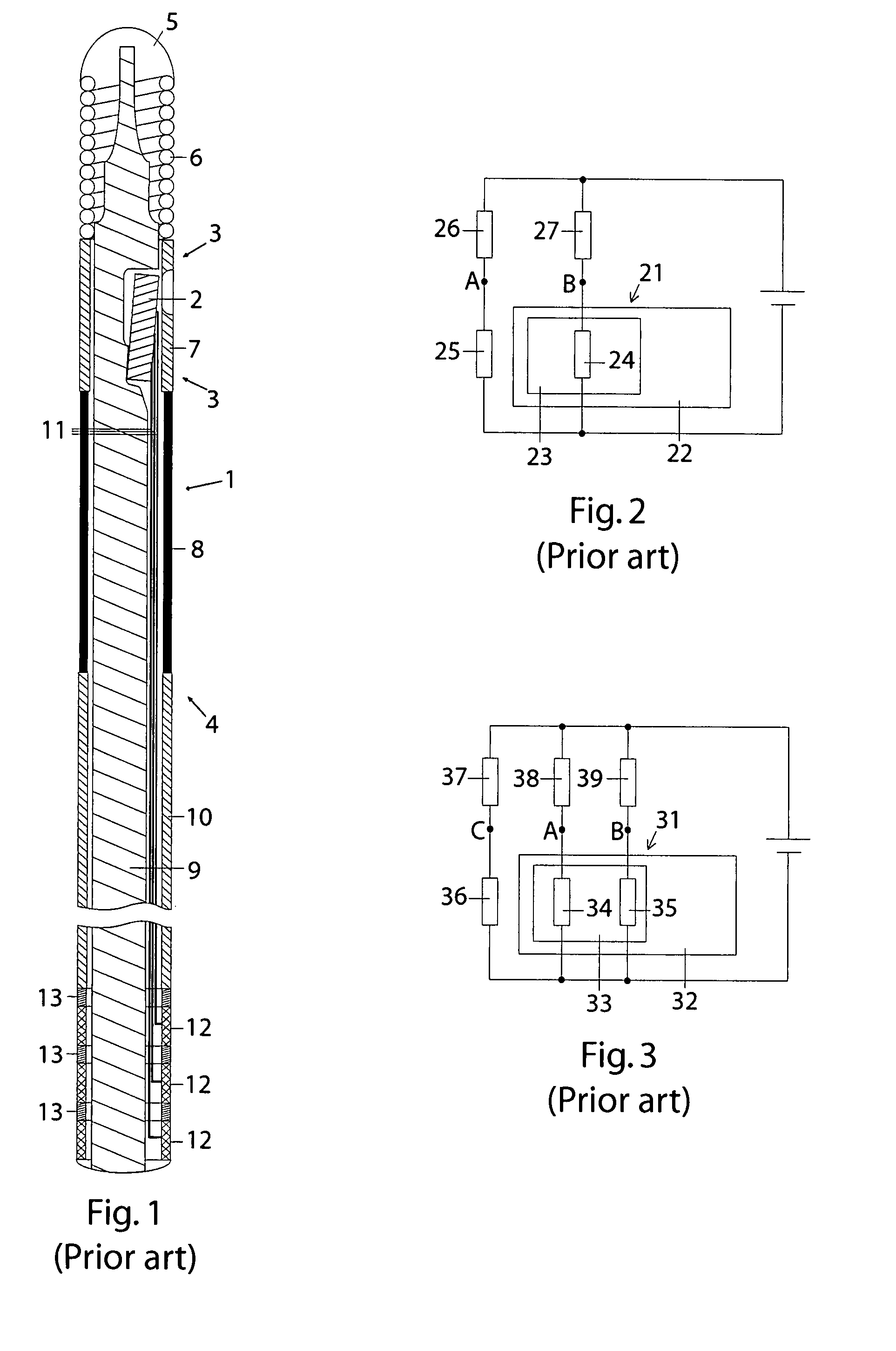Sensor for intravascular measurements within a living body
a technology of intravascular measurement and living body, which is applied in the field of pressure sensors to achieve the effect of improving the sensitivity of the sensor
- Summary
- Abstract
- Description
- Claims
- Application Information
AI Technical Summary
Benefits of technology
Problems solved by technology
Method used
Image
Examples
first embodiment
[0022]The present invention is directed to a sensor and guide wire assembly comprising a piezoresistive element in the form of a nanowire. In the invention, at least one nanowire is arranged on a membrane in a way similar to the arrangements shown in conjunction with FIG. 2 and FIG. 3, respectively. More specifically, FIG. 4a (which is a side view) and b (which is a top view) illustrate schematically how several piezoresistive nanowires 41 (in this case nine nanowires) extend between a first terminal 42 and a second terminal 43, which are attached to the upper side of a flexible membrane 44, from which the terminals 42 and 43 are electrically insulated by insulating layers 45 and 46, respectively. The membrane 44 covers an evacuated cavity 47 made in a chip 48 made from, for example, silicon; and when the membrane 44 deflects due to influence from the ambient pressure (e.g. blood pressure), the nanowires 41 will be stretched, and their (total) electrical resistance will thereby chan...
second embodiment
[0024]In FIGS. 5a and 5b the present invention is disclosed. Here, a number of piezoresistive nanowires 51 (in this case sixteen nanowires) have been arranged within a cavity 52 created by a recess in a chip 53, which recess is covered by a membrane 54. More specifically, the nanowires 51 extend between the bottom surface of the cavity 52 and the membrane 54, such that when the membrane 54 deflects downwards due to influence of the ambient pressure (typically blood pressure), the nanowires 51 are compressed (see FIG. 5b), which leads to a corresponding change in their total resistance. The resistance change can be exploited to determine the applied pressure.
third embodiment
[0025]FIG. 6 shows the present invention, wherein a large number of piezoresistive nanowires 61 are arranged within a double-walled membrane 62, which comprises an inner wall 63 and an outer wall 64. The membrane 62 covers a recess which has been made in a chip 65. Like before, deflection of the membrane 62 will cause the nanowires 61 to compress, which, in turn, leads to a resistance change that can be detected by a suitable electrical circuit.
[0026]As was explicitly discussed in conjunction with FIG. 4c, it can be advantageous to provide the nanowires with some insulation against ambient fluid. The insulation problem can be solved by arranging the nanowires beneath a flexible membrane; and in FIG. 7 an exemplifying embodiment of such an arrangement is disclosed. In this embodiment, several nanowires 71 extend between a first terminal 72 and a second terminal 73, which are attached to the underside of a flexible membrane 74, from which the terminals 72 and 73 are electrically insul...
PUM
 Login to View More
Login to View More Abstract
Description
Claims
Application Information
 Login to View More
Login to View More - R&D
- Intellectual Property
- Life Sciences
- Materials
- Tech Scout
- Unparalleled Data Quality
- Higher Quality Content
- 60% Fewer Hallucinations
Browse by: Latest US Patents, China's latest patents, Technical Efficacy Thesaurus, Application Domain, Technology Topic, Popular Technical Reports.
© 2025 PatSnap. All rights reserved.Legal|Privacy policy|Modern Slavery Act Transparency Statement|Sitemap|About US| Contact US: help@patsnap.com



